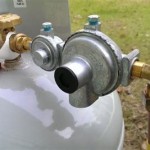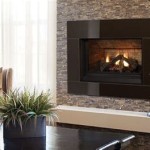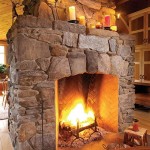Converting a Fireplace to a Gas Insert: A Comprehensive Guide
A traditional wood-burning fireplace, while aesthetically pleasing, can present several challenges, including creosote buildup, the need for constant wood sourcing and storage, and inefficient heating. Converting a traditional fireplace to a gas insert offers a convenient and efficient alternative, providing consistent heat with minimal maintenance. This article provides a comprehensive guide to understanding the process, considerations, and benefits of converting a fireplace to a gas insert.
Gas inserts are self-contained units designed to fit inside an existing fireplace opening. They operate using either natural gas or propane and exhaust combustion byproducts through a flue liner that runs up the existing chimney. Unlike gas logs, which are primarily decorative, gas inserts are designed to provide significant supplemental heating to a room or even an entire home. The conversion process involves several key steps, from initial assessment to professional installation and ensuring proper ventilation.
Understanding the Benefits of a Gas Insert Conversion
There are numerous advantages to converting a wood-burning fireplace to a gas insert. Increased efficiency is paramount. Wood-burning fireplaces are notoriously inefficient, with much of the heat escaping up the chimney. Gas inserts, on the other hand, are significantly more efficient, often boasting efficiency ratings of 70% or higher. This translates to more heat directed into the room and lower energy costs.
Convenience is another significant benefit. Unlike wood-burning fireplaces, gas inserts require no wood chopping, hauling, or storage. They can be easily turned on and off with the flip of a switch or the push of a button on a remote control. Many gas inserts also come with programmable thermostats, allowing for precise temperature control and automated operation.
Cleanliness is also a key advantage. Gas inserts produce significantly less ash and soot than wood-burning fireplaces, reducing the need for frequent cleaning. The elimination of wood debris also contributes to a cleaner and more organized living space. Furthermore, gas inserts emit fewer harmful pollutants into the atmosphere compared to wood-burning fireplaces, making them a more environmentally friendly option.
Finally, improved safety is a major consideration. Wood-burning fireplaces pose a risk of sparks, embers, and chimney fires. Gas inserts are designed with safety features such as automatic shut-off valves and sealed combustion chambers, reducing the risk of fire and carbon monoxide poisoning.
Assessing Your Fireplace and Choosing the Right Gas Insert
Before embarking on a gas insert conversion, a thorough assessment of the existing fireplace is crucial. This assessment should include measuring the dimensions of the fireplace opening to ensure the gas insert will fit properly. The height, width, and depth of the firebox must be accurately measured, taking into account any irregularities or obstructions.
The condition of the existing chimney must also be evaluated. A professional chimney sweep should inspect the chimney for any cracks, damage, or creosote buildup. A new flue liner is typically required for gas insert installations to ensure proper venting of combustion gases. The flue liner should be sized appropriately for the chosen gas insert model.
Choosing the right gas insert involves considering several factors, including heating capacity, style, and fuel type. Heating capacity is measured in British Thermal Units (BTUs). The appropriate BTU rating will depend on the size of the room or area to be heated. A larger room will require a gas insert with a higher BTU rating.
Gas inserts are available in a variety of styles, from traditional to contemporary. The style should complement the existing décor of the room. Options include realistic-looking artificial logs, glass media, and decorative fireboxes. Fuel type is another important consideration. Natural gas is typically less expensive than propane, but access to a natural gas line is required. If natural gas is not available, a propane gas insert can be used with a propane tank.
Evaluating the energy efficiency of the gas insert is also crucial. Look for models with high efficiency ratings to minimize energy costs. Some gas inserts are eligible for energy efficiency rebates or tax credits, which can further reduce the overall cost of the conversion.
The Installation Process and Key Considerations
The installation of a gas insert should always be performed by a qualified and licensed professional. Improper installation can lead to safety hazards, such as gas leaks or carbon monoxide poisoning. The installation process typically involves several steps.
First, the existing fireplace is cleaned and prepared for the installation. This may involve removing any existing grates, logs, or debris. The chimney is then inspected and cleaned, and a new flue liner is installed. The flue liner is typically made of flexible stainless steel and is sized to fit the gas insert. It's inserted into the existing chimney and connected to the gas insert.
Next, the gas insert is carefully placed into the fireplace opening. The gas line is connected to the gas insert, and all connections are thoroughly checked for leaks. A gas shut-off valve should be installed near the gas insert for safety. The electrical wiring is then connected to power the blower fan and any other electronic features.
Once the gas insert is installed, it is tested to ensure proper operation. The professional will verify that the gas insert ignites properly, the flame is stable, and the blower fan is functioning correctly. The carbon monoxide levels are also tested to ensure safe operation. The installer will also explain the proper operation and maintenance of the gas insert to the homeowner.
Ventilation is a paramount concern when converting a fireplace to a gas insert. Ensuring proper ventilation prevents the buildup of dangerous gases like carbon monoxide. The flue liner must be properly sized and installed to ensure adequate draft. Regular chimney inspections are recommended to check for any blockages or damage that could impede ventilation.
Homeowners should also be aware of local building codes and permit requirements. In many jurisdictions, a permit is required for gas insert installations. The permit process typically involves submitting plans and specifications to the local building department and undergoing an inspection after the installation is complete. Compliance with local building codes ensures that the installation is safe and meets all applicable standards.
Regular maintenance is essential for ensuring the safe and efficient operation of a gas insert. This includes annual inspections by a qualified technician to check for any potential problems, such as gas leaks, damaged components, or creosote buildup. The gas insert should also be cleaned regularly to remove any dust or debris that could affect its performance. The glass door should be cleaned with a non-abrasive cleaner to maintain visibility of the flames.
The installation of a carbon monoxide detector is highly recommended when using a gas insert. Carbon monoxide is a colorless, odorless gas that can be deadly. A carbon monoxide detector will alert occupants to the presence of carbon monoxide, allowing them to evacuate the premises and seek medical attention.
Furthermore, understanding the warranty of the gas insert is beneficial. Most gas inserts come with a warranty that covers defects in materials and workmanship. Homeowners should carefully review the terms and conditions of the warranty to understand what is covered and what is not. Regular maintenance, as specified by the manufacturer, is often required to maintain the validity of the warranty.
Cost Considerations for a Gas Insert Conversion
The cost of converting a fireplace to a gas insert can vary depending on several factors, including the type of gas insert chosen, the complexity of the installation, and local labor rates. The cost of the gas insert itself can range from several thousand dollars, depending on the BTU rating, style, and features. Installation costs can also vary significantly, depending on the condition of the existing chimney and the complexity of the gas line connection. The cost of a new flue liner can also add to the overall expense.
Obtaining multiple quotes from different contractors is recommended to ensure a competitive price. When comparing quotes, it is important to consider not only the price but also the experience and qualifications of the contractor. Check for licenses, insurance, and positive customer reviews. Ask for references and contact previous clients to assess the contractor's workmanship and reliability.
While the initial cost of converting a fireplace to a gas insert may seem significant, it is important to consider the long-term benefits, such as increased energy efficiency, lower heating costs, and reduced maintenance. Over time, the savings in energy costs and maintenance can offset the initial investment. Furthermore, the added convenience and improved safety of a gas insert can enhance the overall value and enjoyment of the home.
Financing options may be available to help offset the cost of a gas insert conversion. Some manufacturers offer financing programs, or homeowners may be able to obtain a home equity loan or line of credit. Exploring financing options can make the conversion more affordable and accessible.
Finally, researching potential rebates and incentives can further reduce the overall cost. Many utility companies and government agencies offer rebates for energy-efficient appliances, including gas inserts. Check with local utility companies and government agencies to see if any rebates or incentives are available in your area. These rebates can significantly reduce the upfront cost of the conversion.
Converting A Wood Burning Fireplace Into Gas Heat Glo
Can I Convert My Wood Burning Fireplace To Gas Woodlanddirect Com

Convert From Wood To Gas With A Insert The Kernel Burner

Convert To Gas Installing Fireplace Inserts Doctor Flue
Can I Convert My Wood Burning Fireplace To Gas Woodlanddirect Com

Wood To Gas Fireplace Conversion In Wisconsin Free Quote Badgerland Waesha

Can A Wood Burning Fireplace Be Converted To Gas The Flame Company

Wood Burner Conversion New Jersey Fireplaces Kjb

Convert From Wood To Gas With A Insert The Kernel Burner

Convert A Wood Fireplace To Gas Full Service Chimney
Related Posts








